Travel Diary from the Coastal Pilgrim Route in Norway
Kystpilegrimsleia offers a different kind of pilgrimage—by land and by sea. The summer of 2025 was unusually hot, so for this travel duo, it was especially pleasant to spend time on breezy boat decks and inside cool medieval buildings.
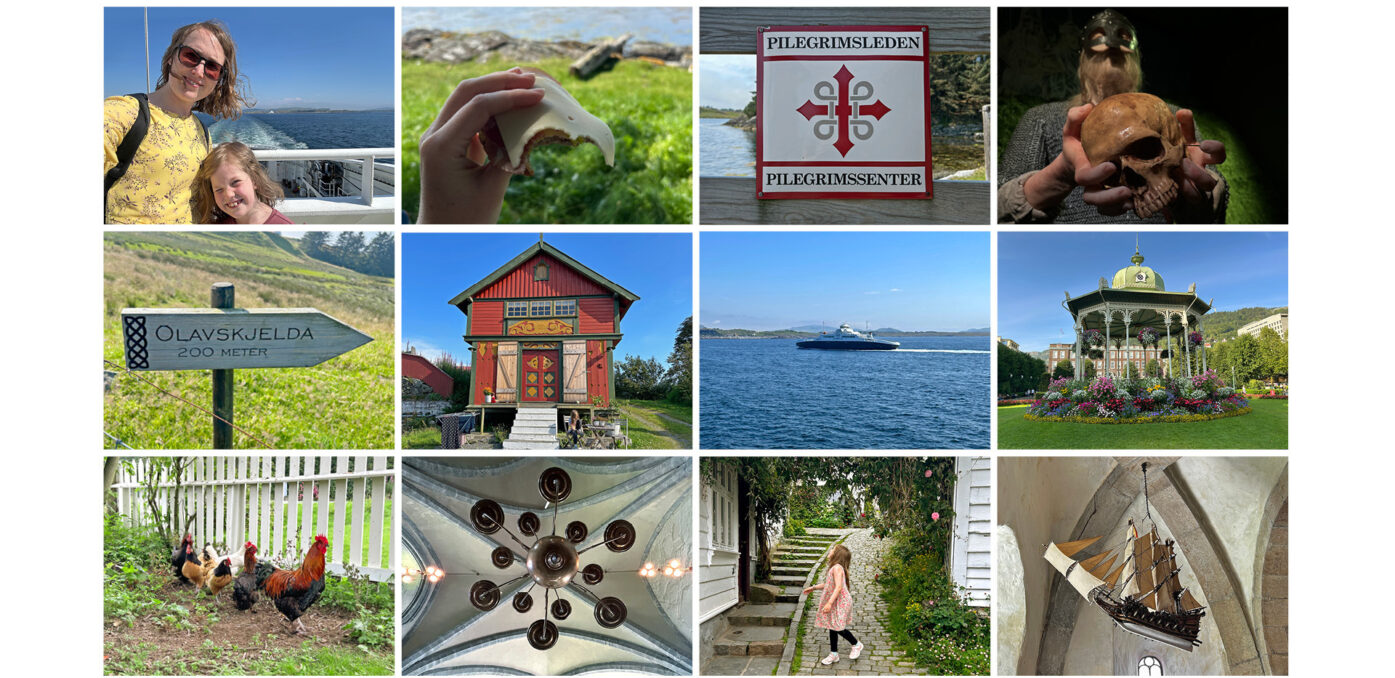
Our journey begins just outside Stavanger city in the east coast. I’ve traveled here from Trondheim with my 8-year-old daughter to follow Kystpilegrimsleia towards Nidaros Cathedral.
It’s not very common to go on a pilgrimage with children, as the walking distances are often too long for little legs. The coastal pilgrim route in Norway is different—you travel by boat, often combined with bus or car, making the route suitable for both young and old, regardless of mobility.
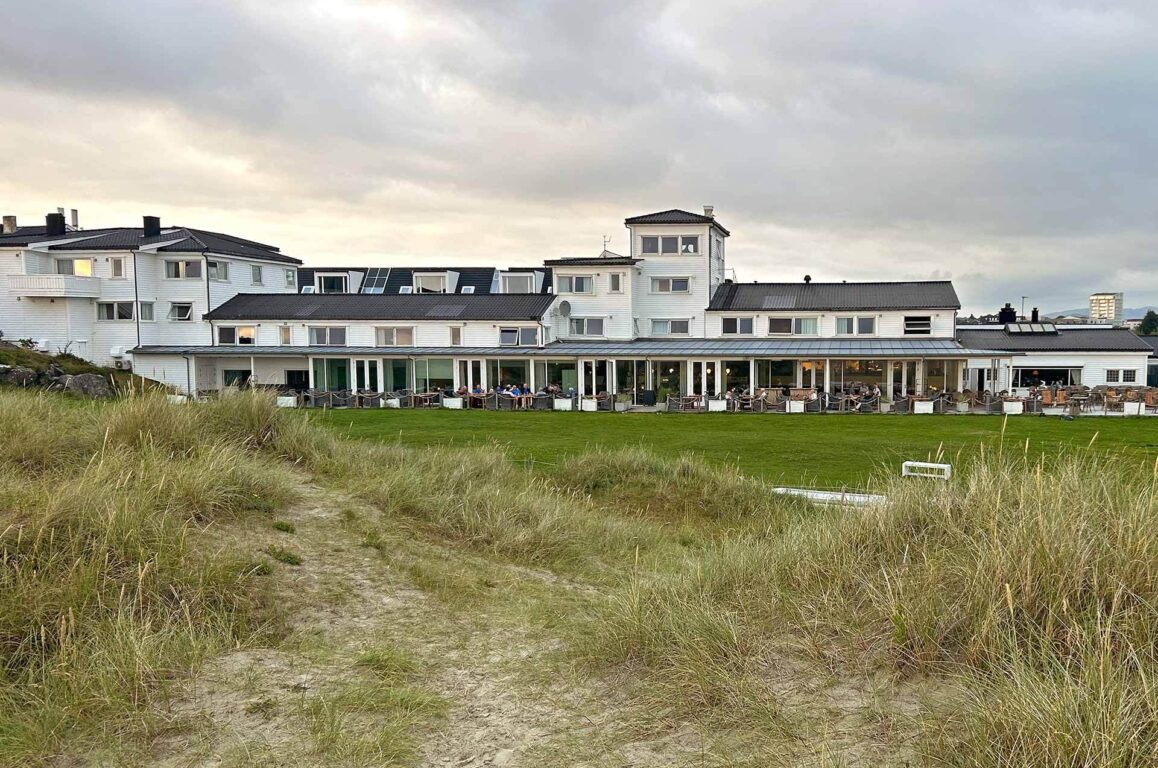
We spend the first night at Sola Strand Hotel, right by the beach where we can enjoy the sunset.
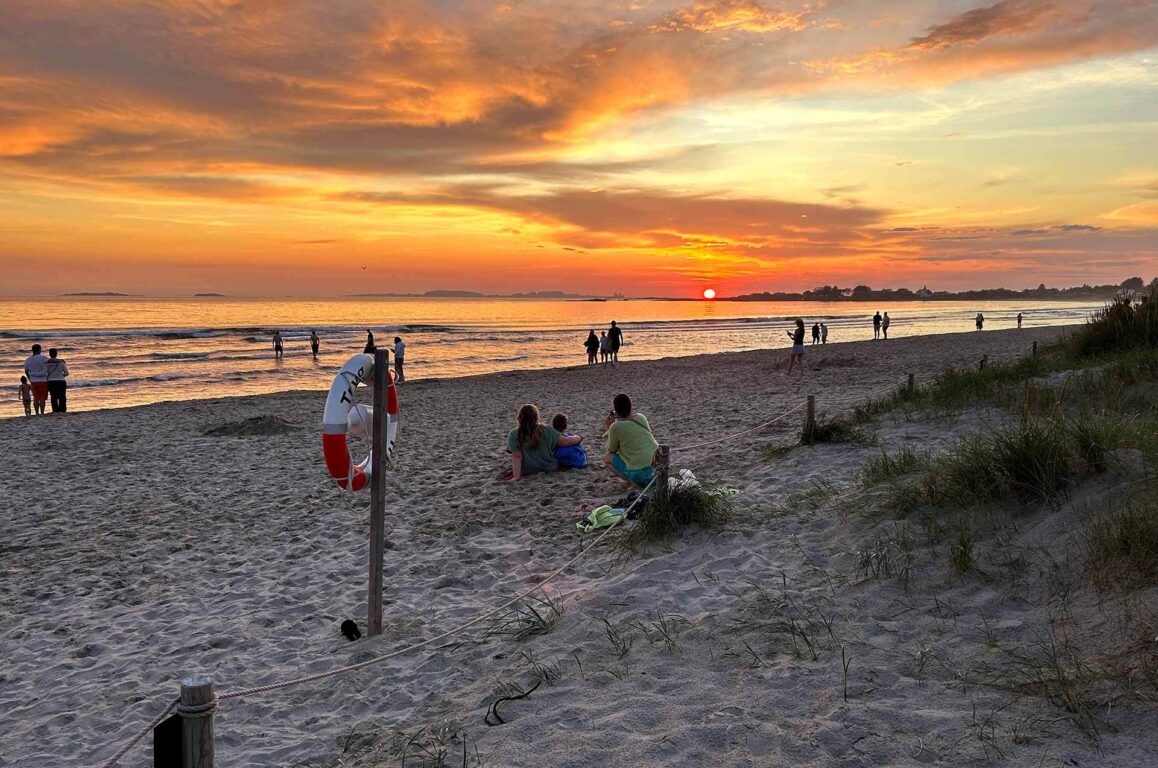
The next day, we head into Stavanger city center to visit the first key site on our journey: Stavanger Cathedral.
There are 26 key sites along the Coastal Pilgrim Route—churches, monasteries, and other historically important places which are marked on pilgrimage maps. You can recieve a pilgrim stamp at each site.
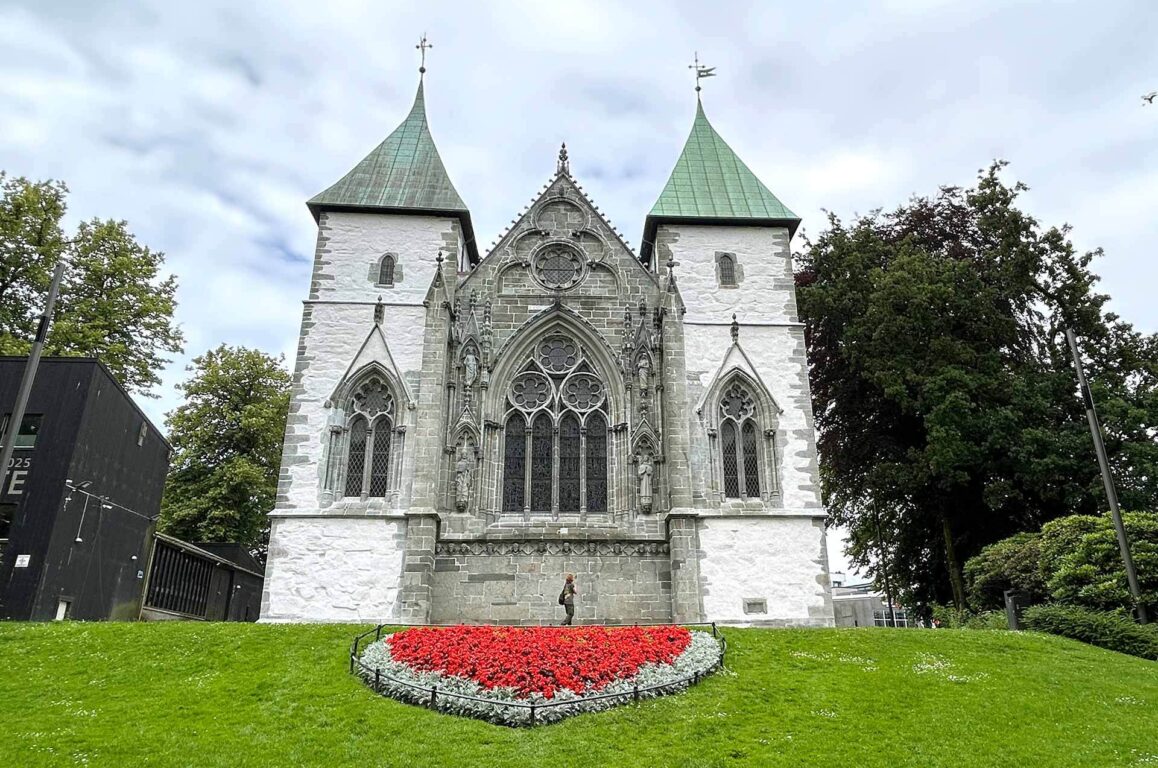
Stavanger Cathedral has many similarities to our hometown pilgrimage destination, Nidaros Cathedral. In the church, we get a stamp in our pilgrim passport, and we visit the milestone next to it, which tells us it’s 964 kilometers to "Nidaros" (the old name of Trondheim).
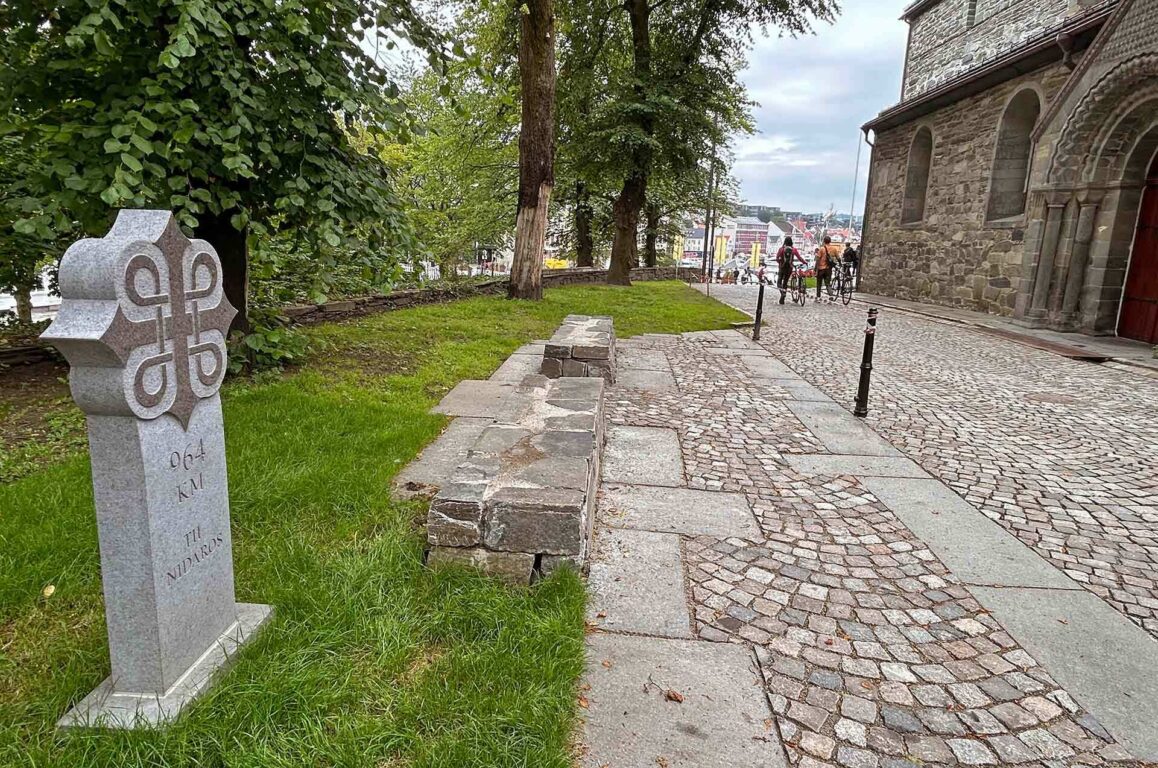
Afterwards we go strolling through narrow cobbled streets lined with small wooden houses and rose gardens.
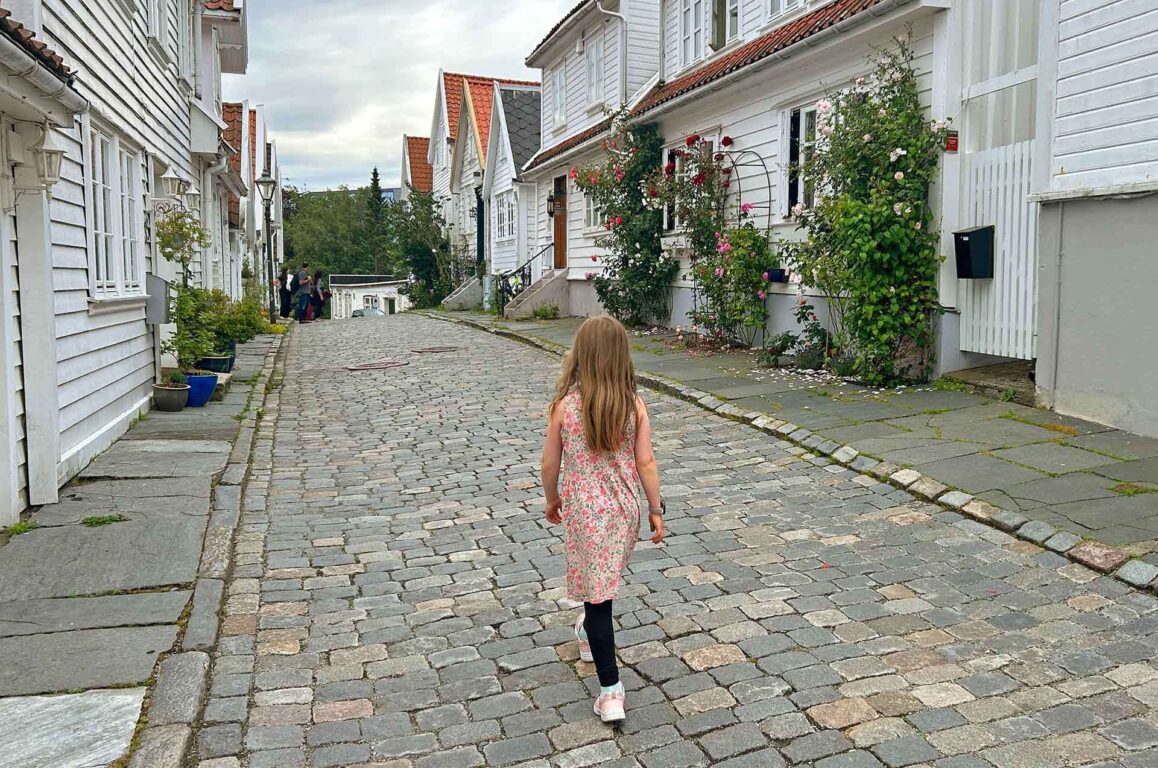
We meet a very friendly woman at the tourist information center who gives us advice about the next part of our journey. She explains that it’s possible to take a cruise ship to Bergen, departing from south of Stavanger, but it doesn’t make any stops along the way. We plan to make several stops, therefore it will be better to continue north by bus or car.
The next day, we drive north to Utstein Monastery, half an hour north of Stavanger.
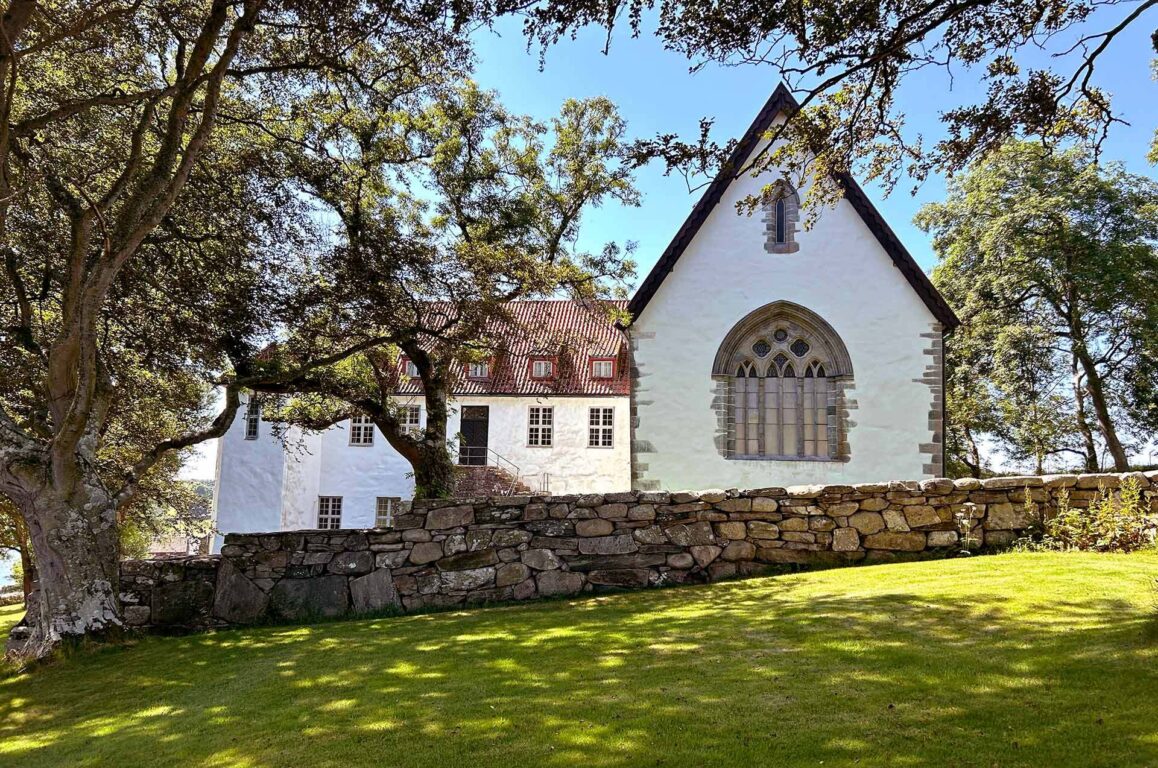
Utstein Monastery is one of the most famous key sites along the route. The stone building is surrounded by beautiful old trees, and the courtyard contains a small garden.
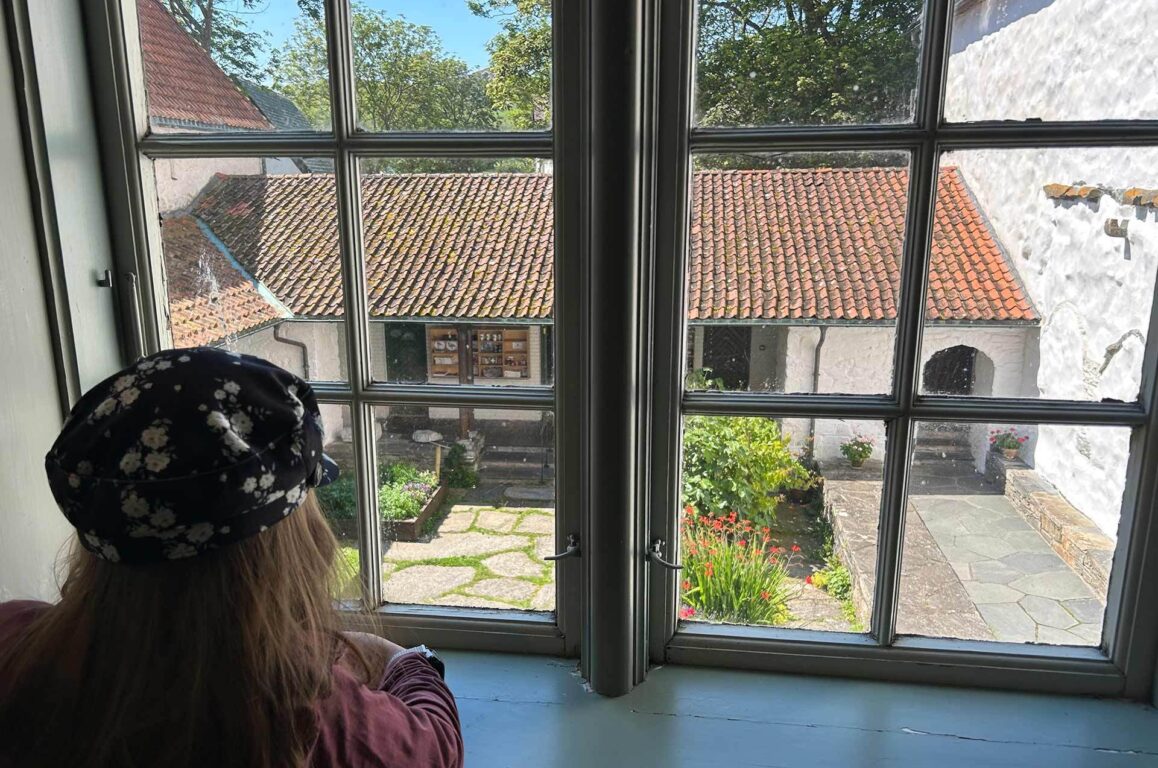
Photo: Kjersti Eggen
This is Norway’s best-preserved medieval monastery. King Harald Hårfagre once had his royal estate here, before it became an Augustinian monastery in the Middle Ages, and later a bailiff’s residence in the 18th century. Today, it contains several historical exhibitions and a small café, and pilgrim services are held here in the summer.
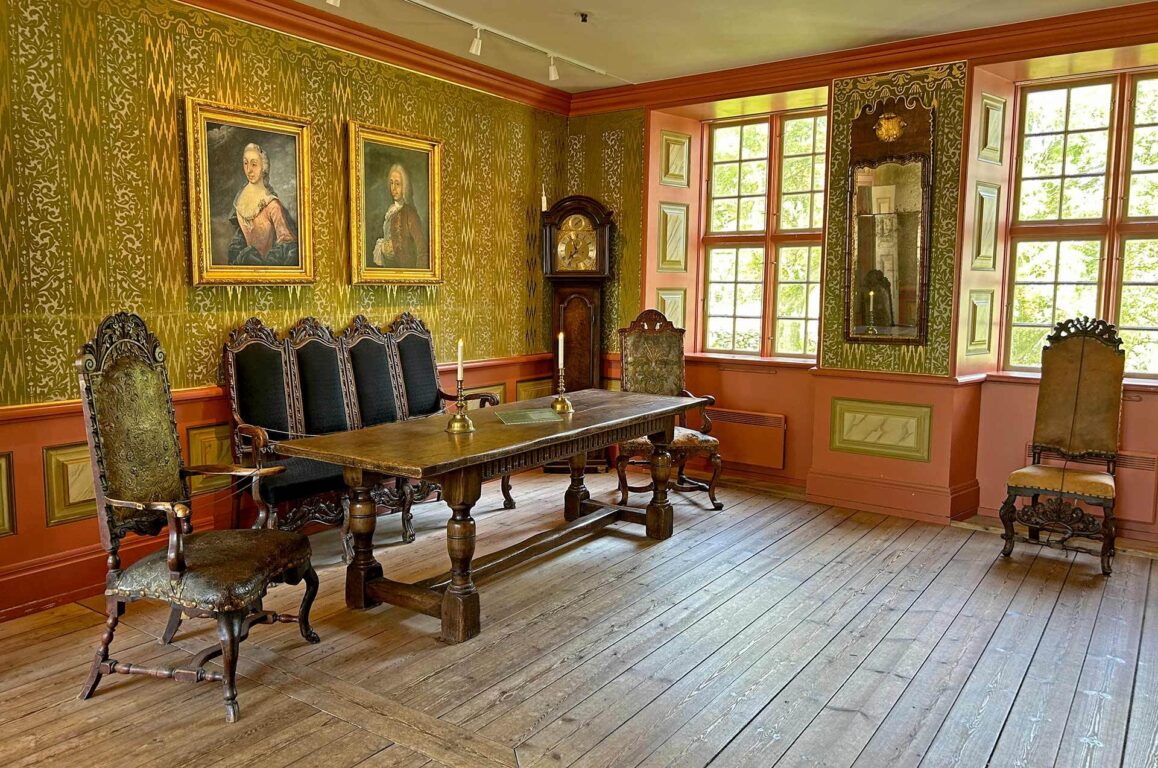
One kilometer away lies the beautiful Utstein Pilgrimsgård, which offers accommodation to pilgrims.
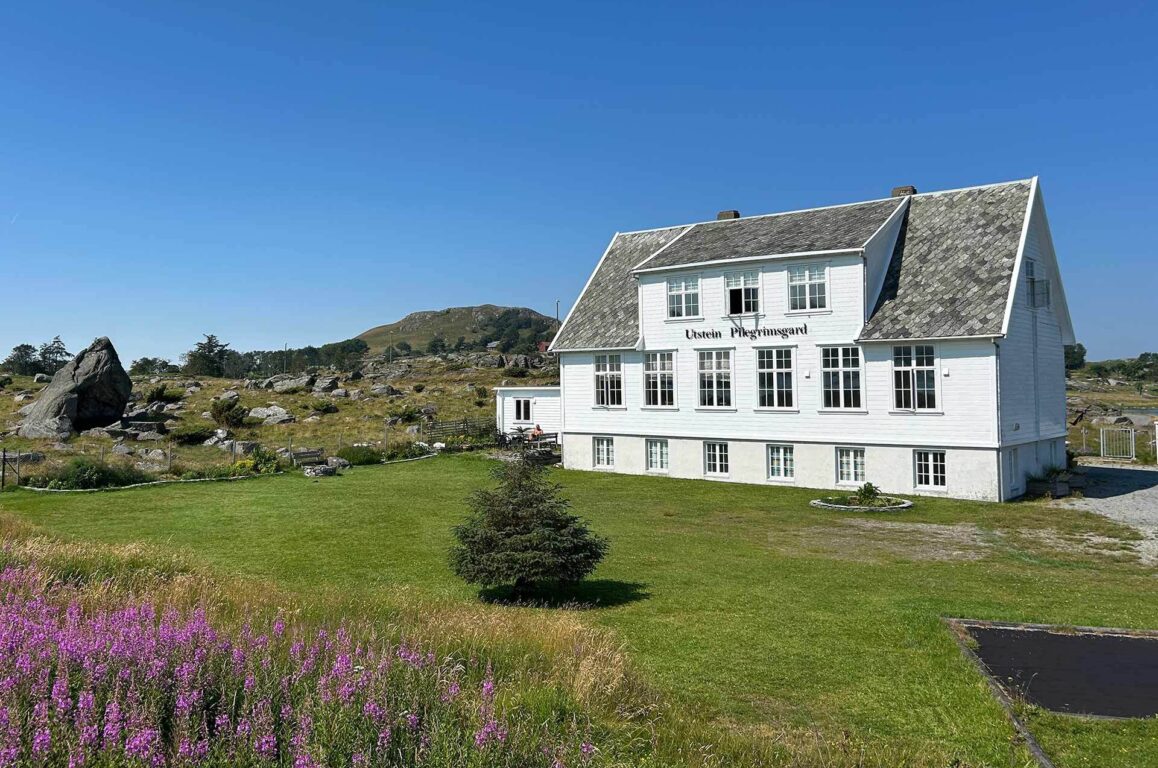
Photo: Kjersti Eggen
Here, we’re served waffles and coffee in friendly company before continuing driving to the ferry.
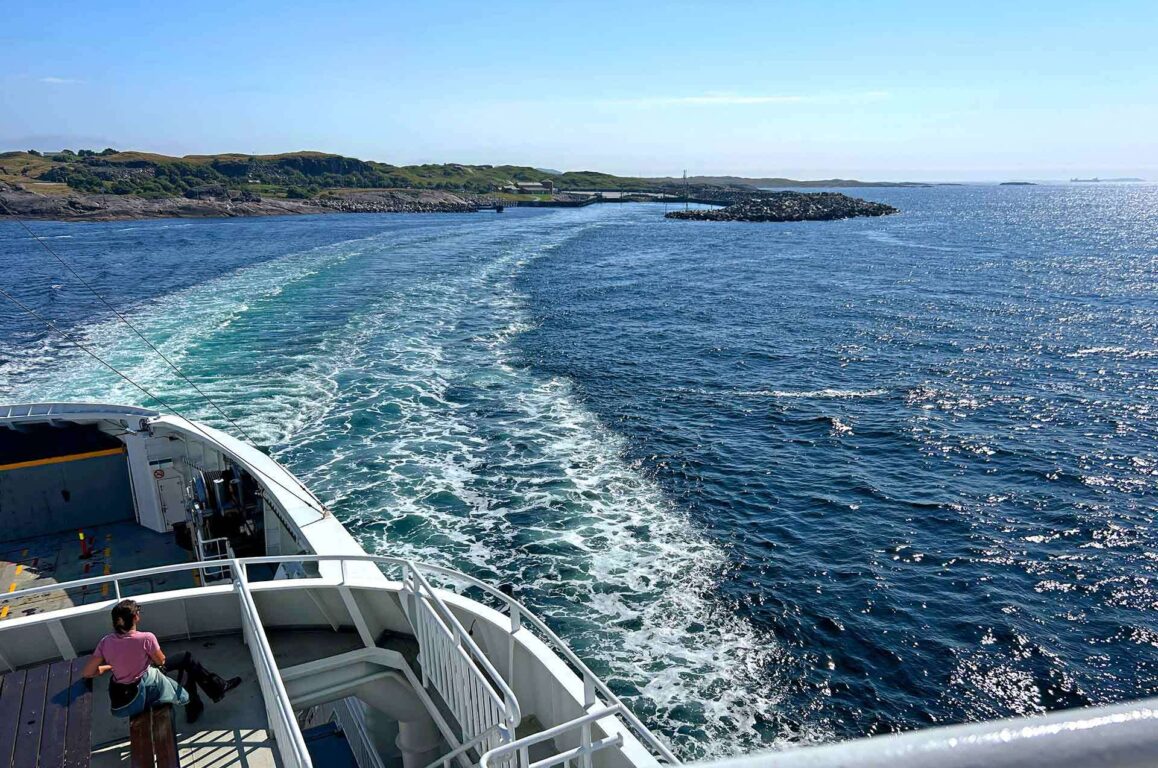
The car ferry takes us from Mortavika to Arsvågen, which is half an hours drive from Avaldsnes, where we'll stay for the night.
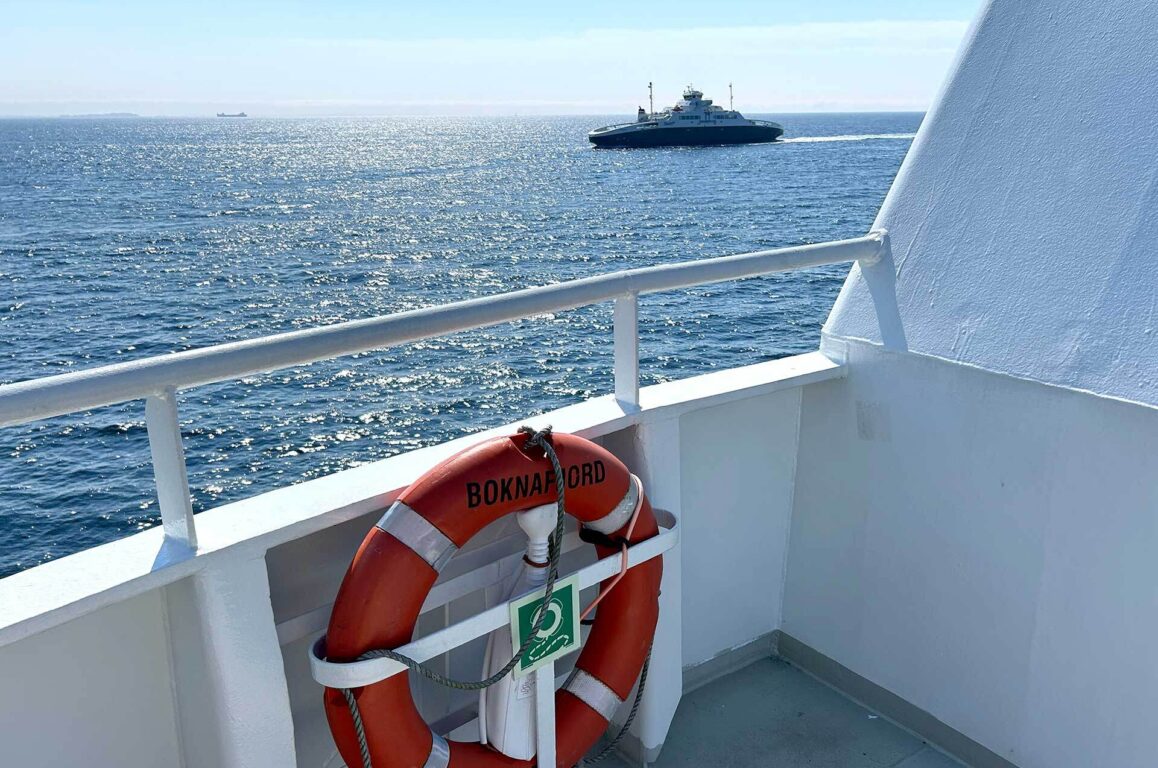
At Avaldsnes, we stay in a colorful storehouse decorated with wood carvings. There is a sacred St. Olav spring a short walk from here.
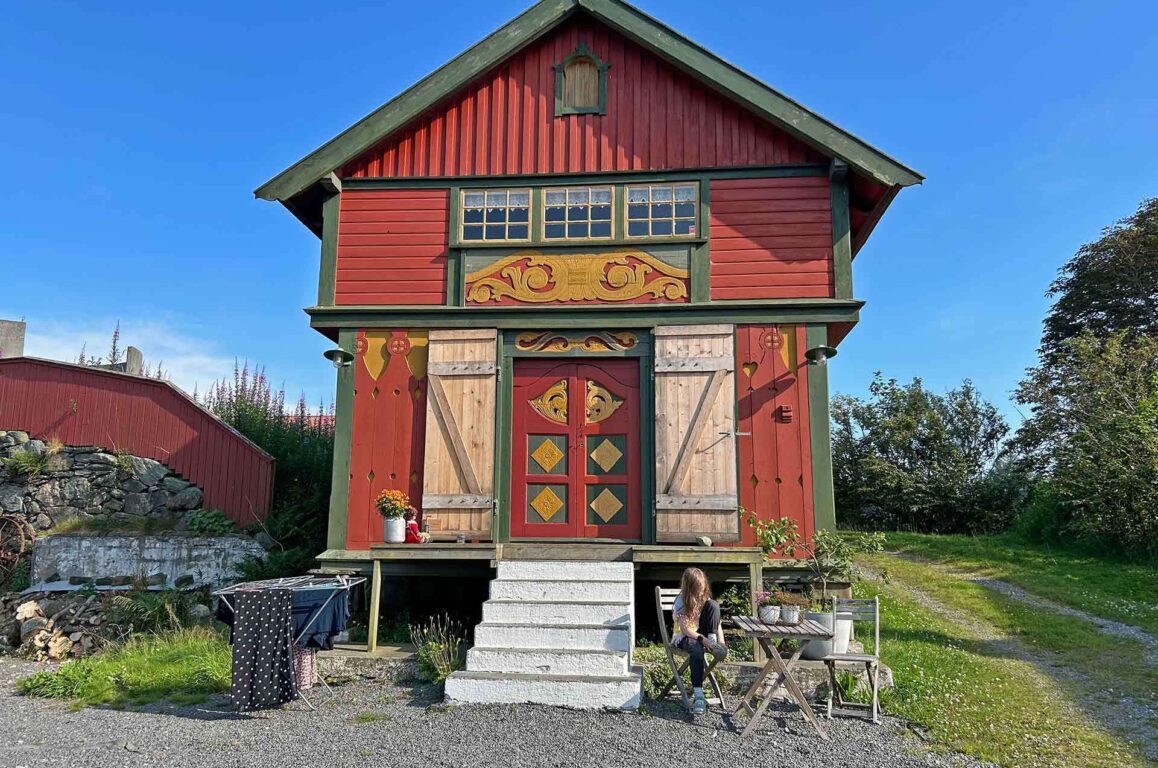
In the morning, we’re woken by the rooster on the farm, the landscape is surrounded by fog, and it feels like we are part of a fairy tale. We shuffle across the courtyard to freshen up in the main house. Breakfast consists of fresh eggs that we collect ourselves from the chicken coop.
The hosts here are passionate about hospitality and sustainability, and we have memorable conversations in the small farmyard.
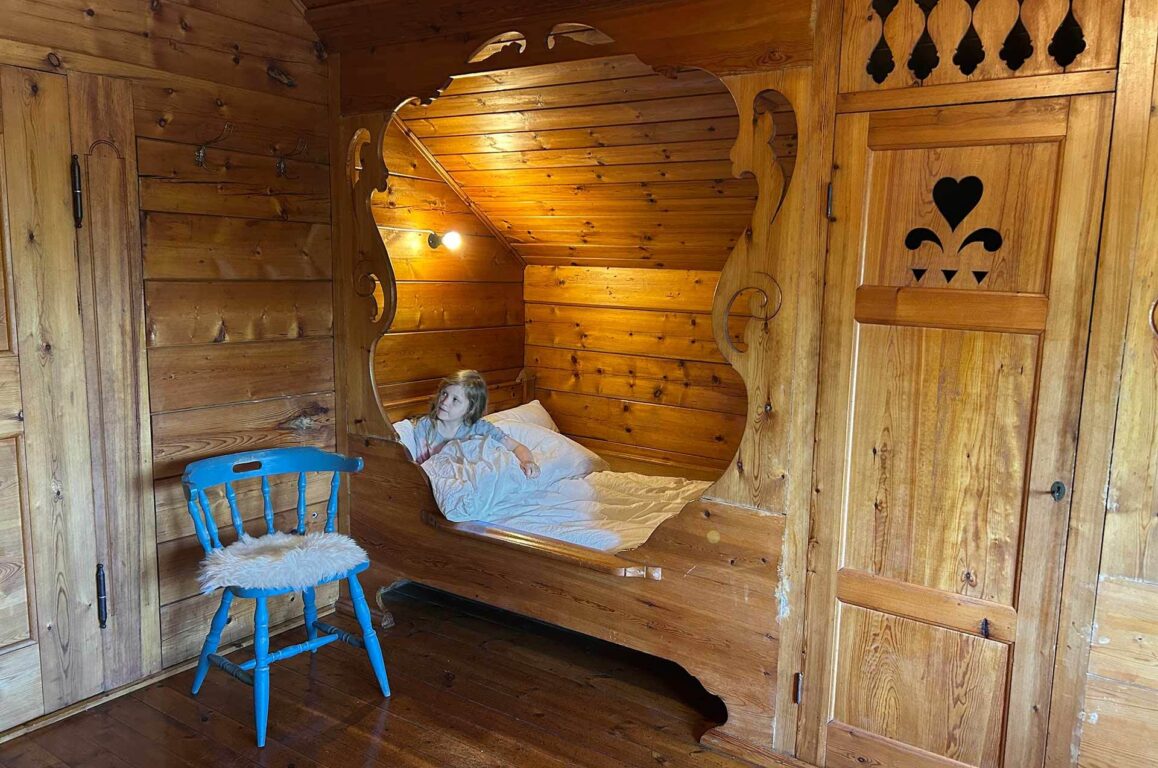
After breakfast, we visit the Nordvegen History Centre, part of the Avaldsnes key site.
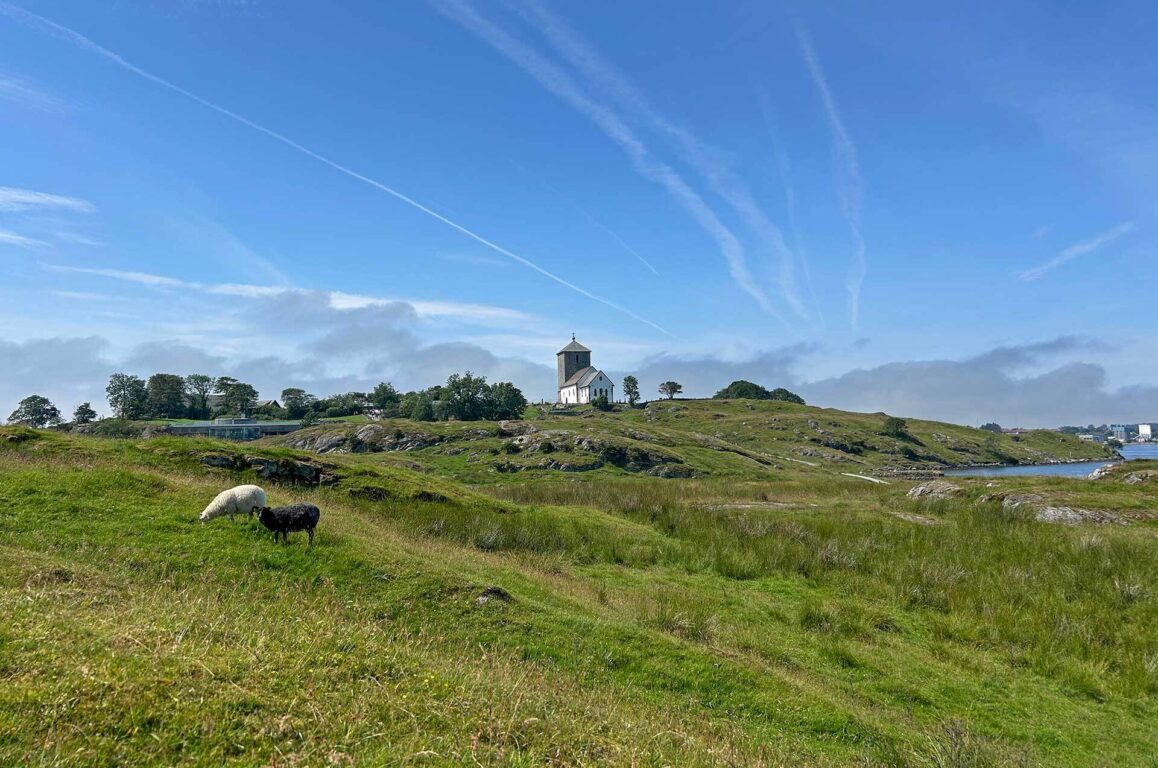
The museum is located on historic grounds, right next to Avaldsnes Church, which was built around 1250 in honor of St. Olav. The area is surrounded by burial mounds and cultural heritage sites, You'll also find Avaldsnes Pilgrim Center here, one of 12 regional pilgrim centers in Norway that offers help and advice to travellers.
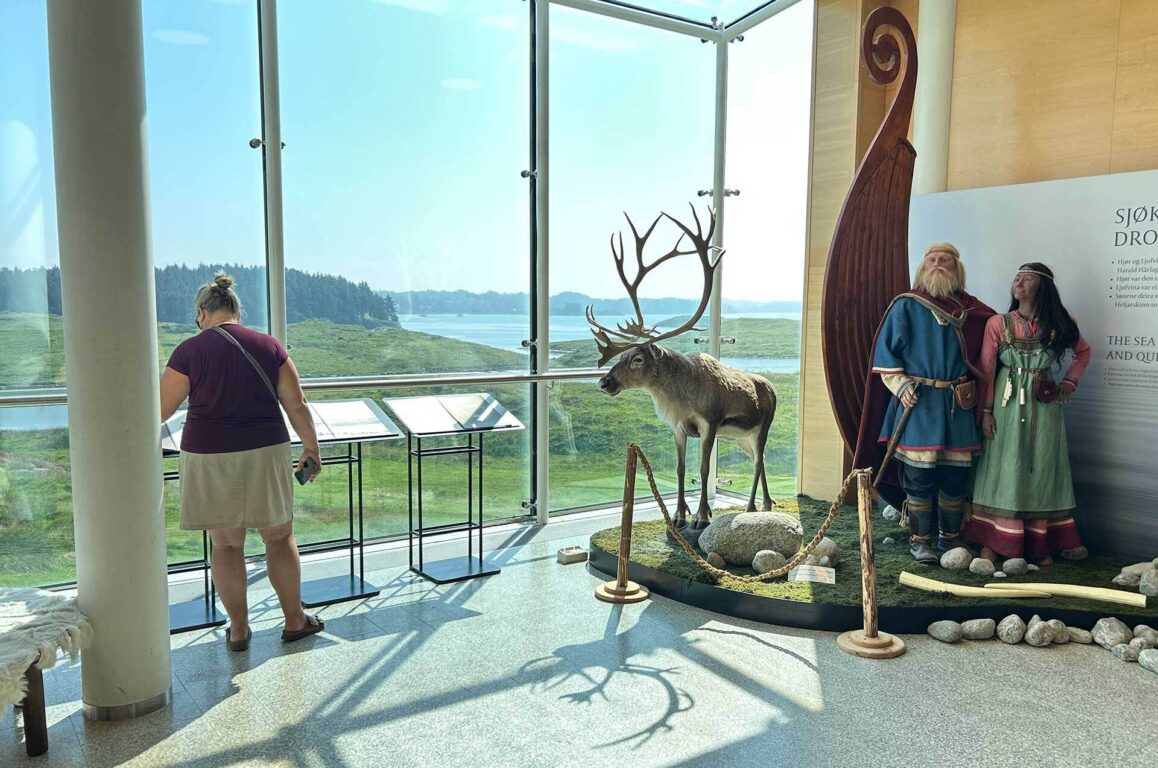
We spend the whole day here—first learning about the Vikings and kings through the exhibitions in the museum, then following the pilgrim trail to the nearby Viking Farm, where we experience what everyday life was like 1,000 years ago.
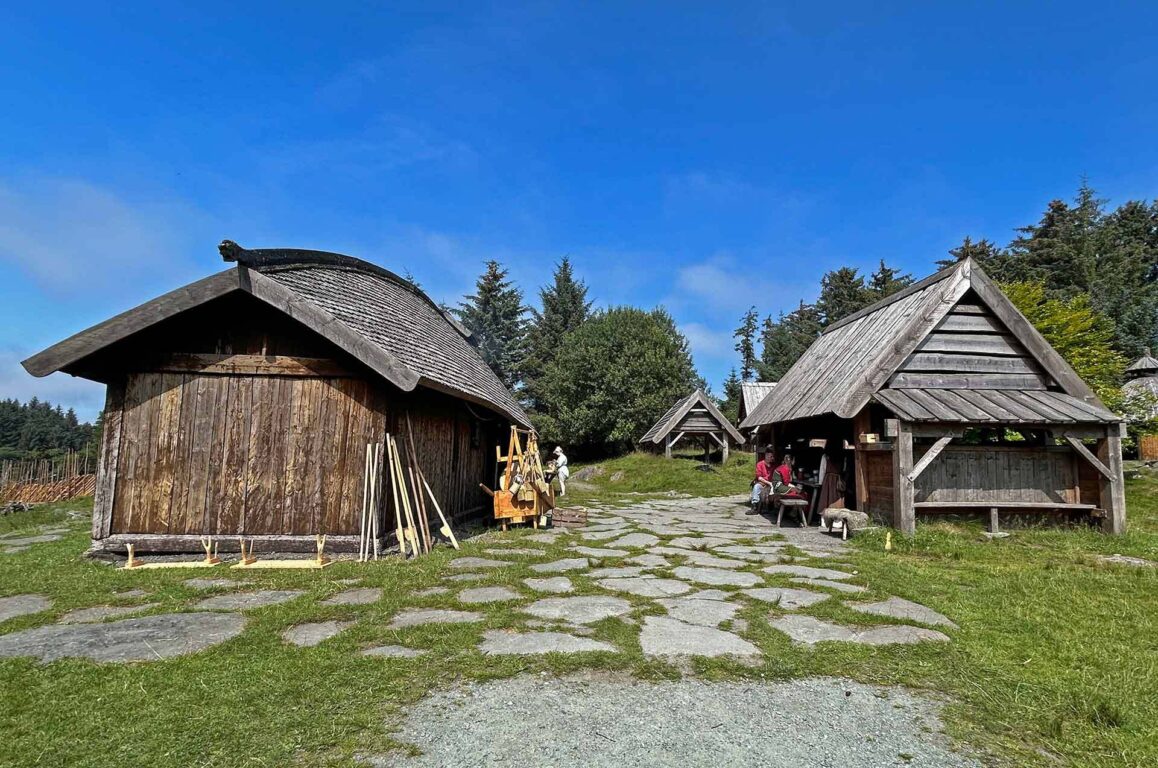
At the farm there is a langhus (longhouse) and several other replicas of buildings from the viking era.
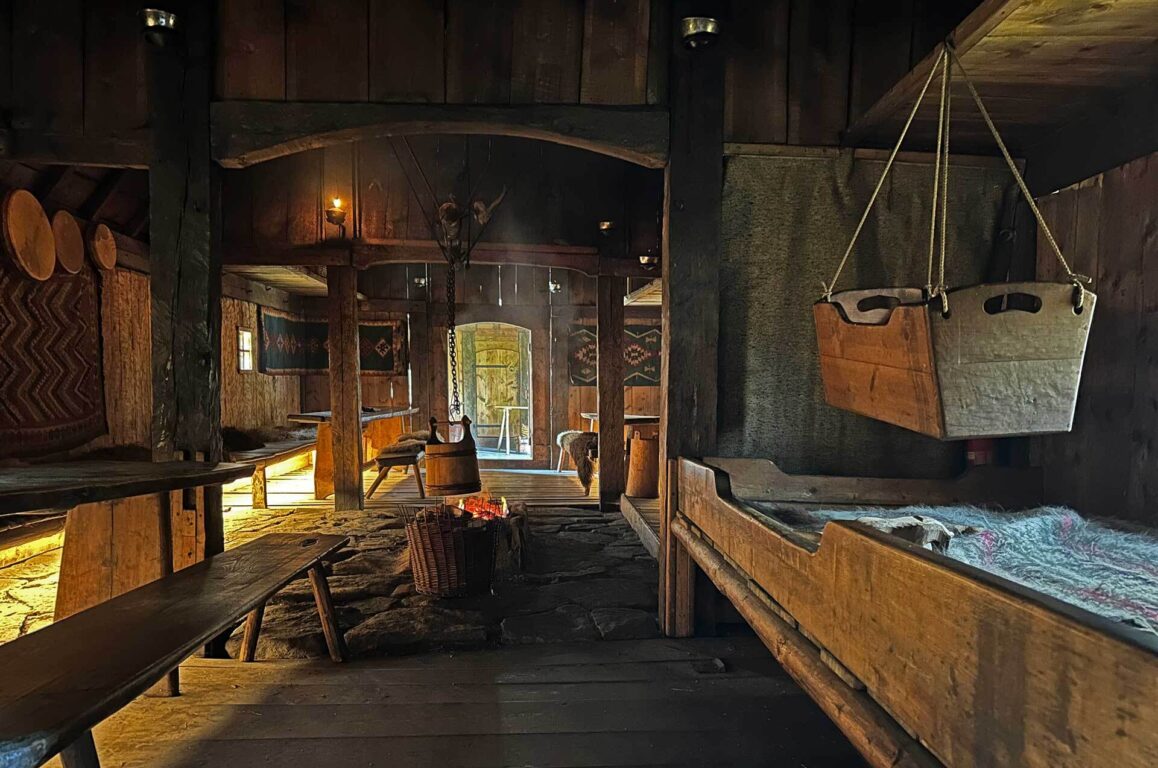
The houses are built as part of an archeological research project to learn about Viking building tecniques.
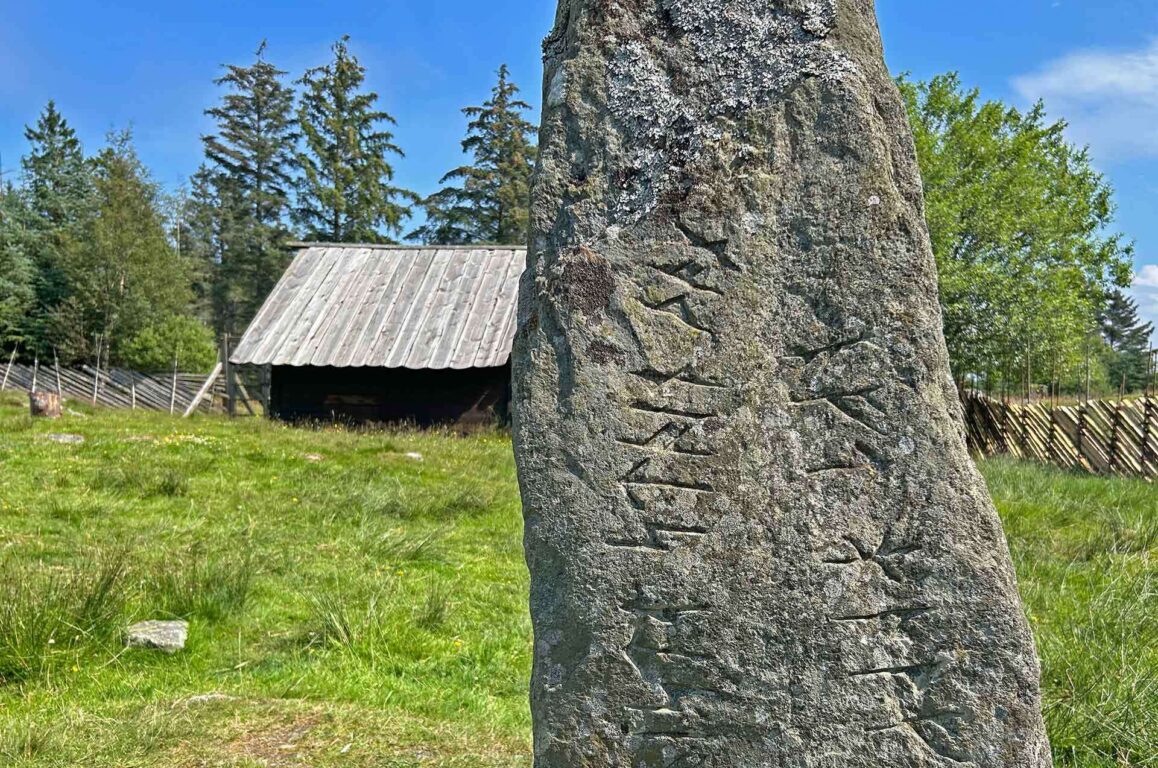
The next day, our journey continues to Leirvik by bus, and then to Bergen by express boat—one of several route options we discovered using the travel planner for public transport in Norway, EnTur.
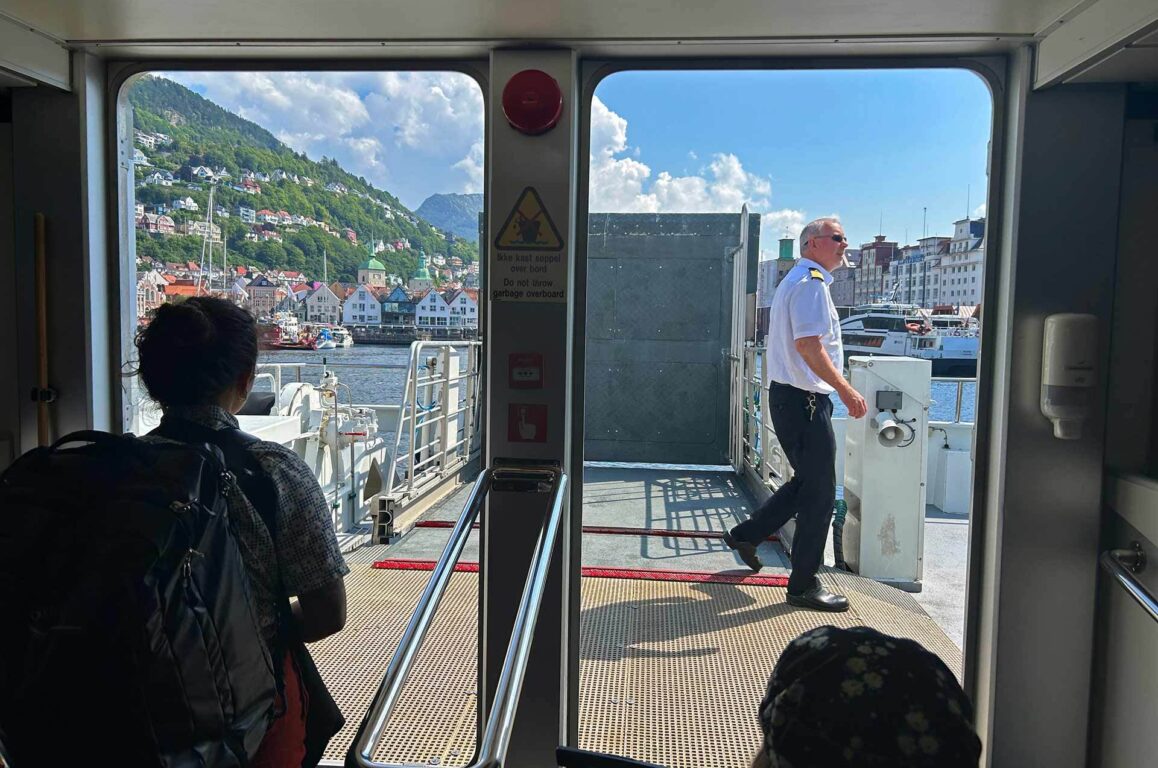
There’s something magical about approaching Vågen in Bergen by boat, seeing the fortress and tower on the islet, followed by the colorful wharf houses. The boat arrives at Strandkaiterminalen, and we’re staying at a hotel just a short walk from there, wich turns out to be very pratical.
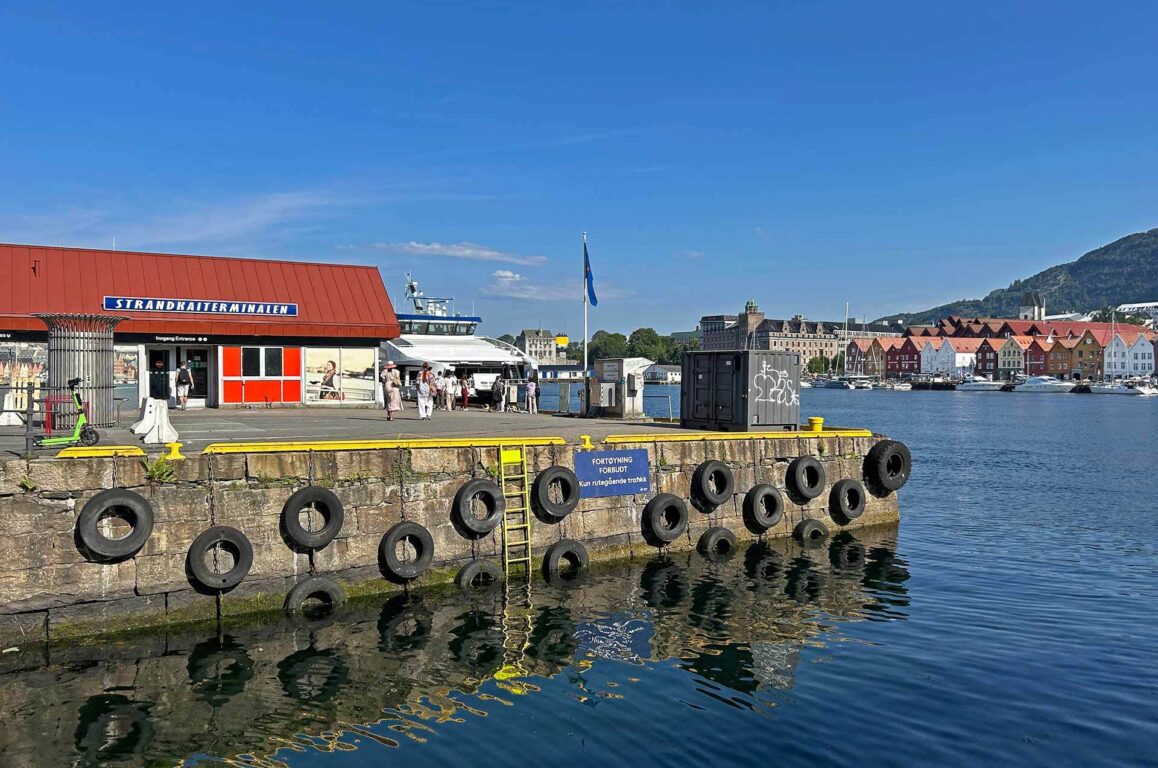
If you plan to visit Bergen, I advise you to book accommodation well in advance (the same goes for other cities along the pilgrim route, such as Oslo and Trondheim). There are many charming hotels with historical flair, but they tend to be more expensive than the budget hotel chains and fill up quickly during tourist season.
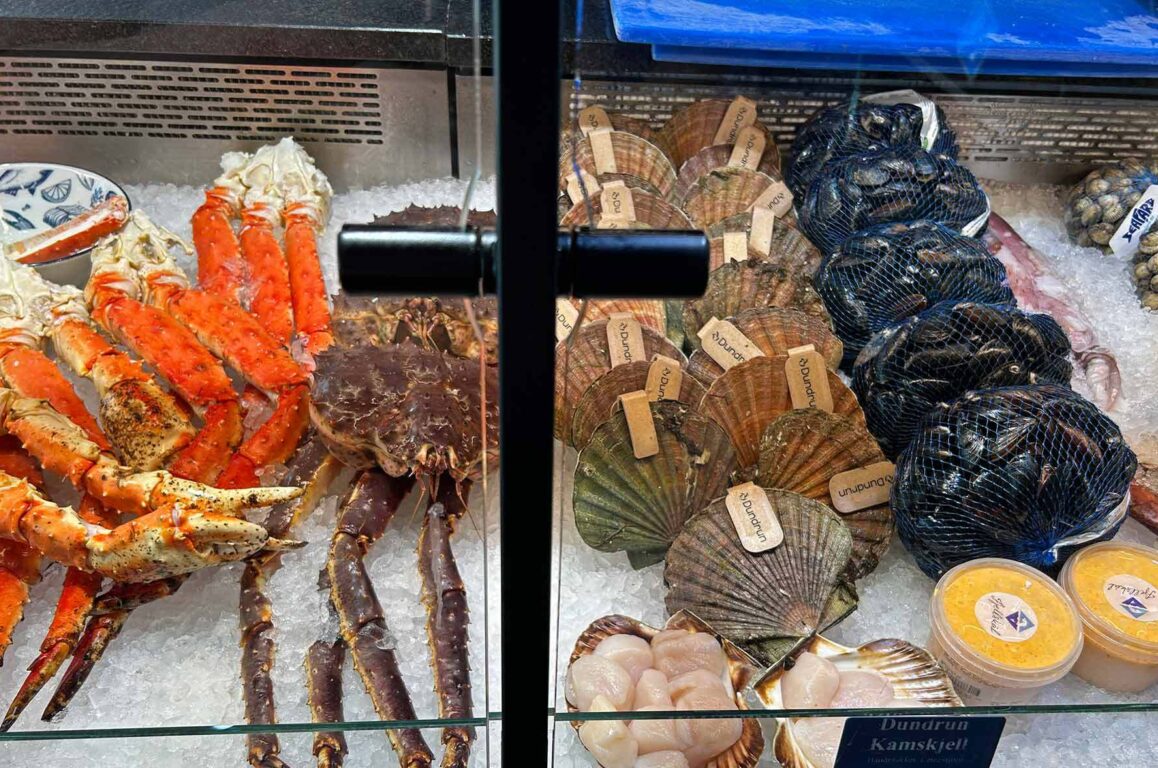
We walk along the fish market, looking at monkfish, scallops, and crabs for sale. The Bryggen area features both museums, gourmet restaurants, and souvenir shops. A heatwave strikes during our stay, with temperatures rising above 30°C, so our plan to explore cool medieval stone buildings proves perfect.
Just past Bryggen lies our first stop: Rosenkrantz Tower.
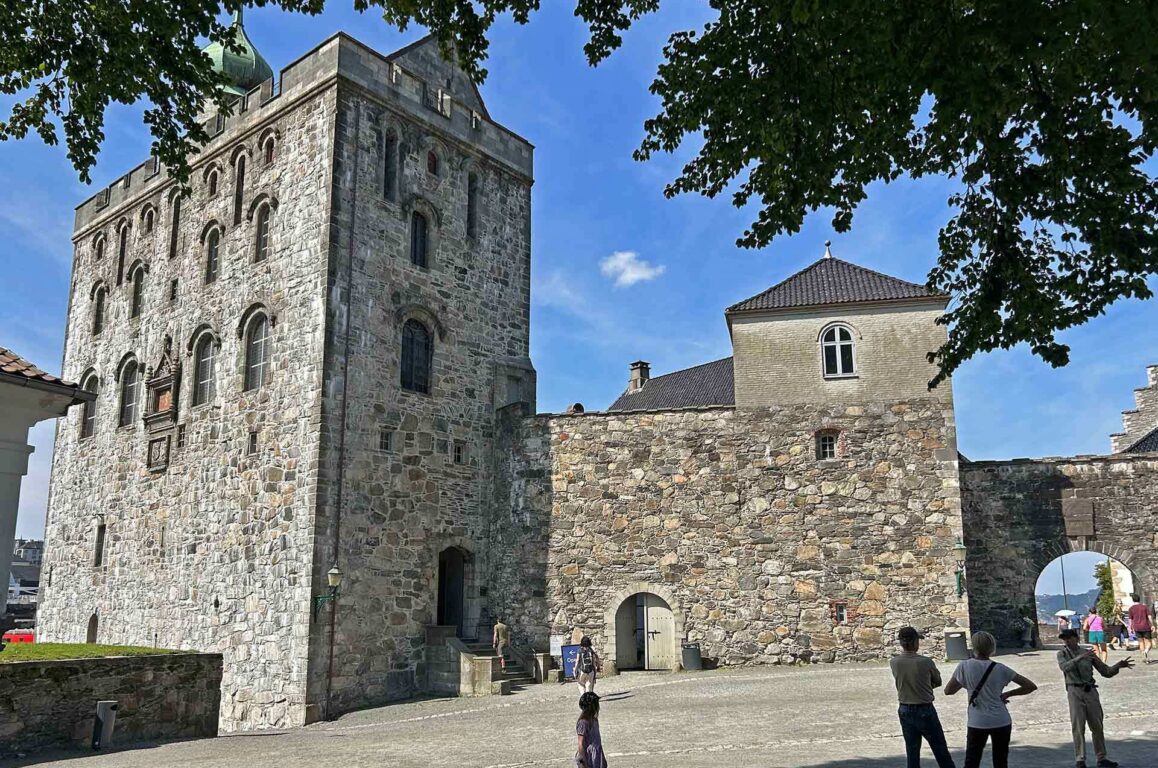
Walking through this building offers a kind of summary of Bergen’s history—the oldest parts date back to the 1270s and were built by King Mangus Håkonsson, and it has since been extended several times. In the 16th century it became the governor´s castle.
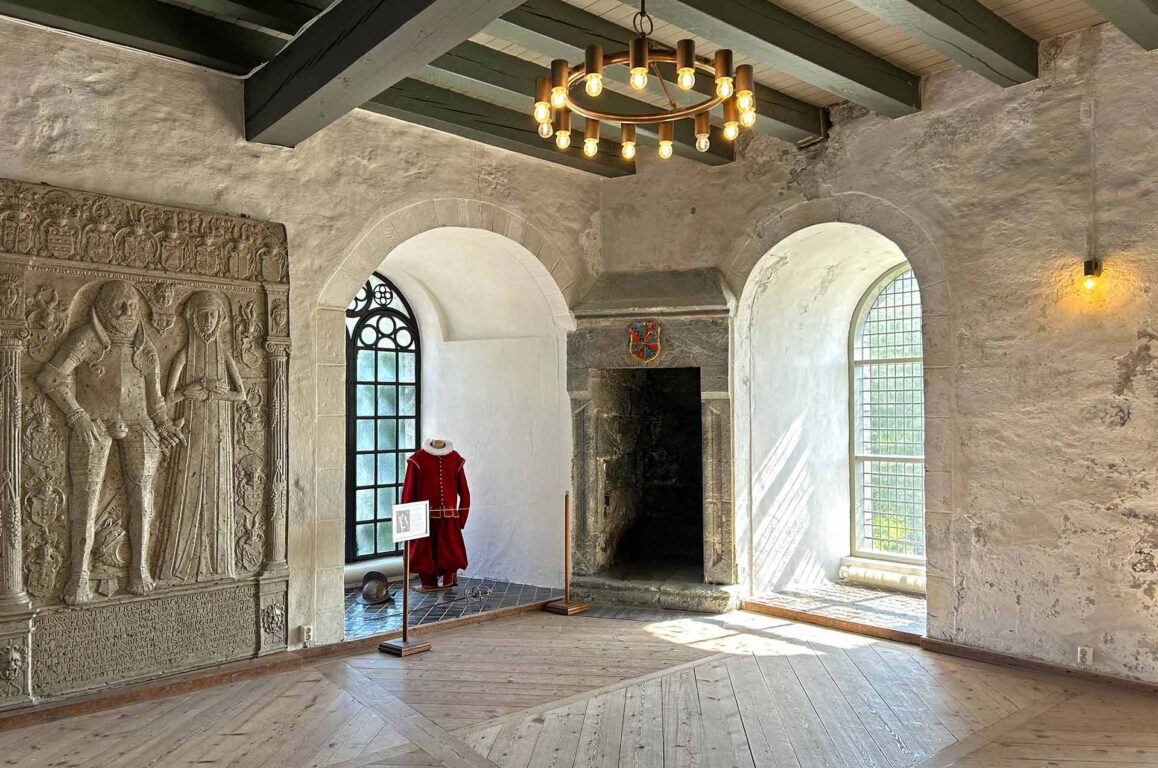
The tower was also restored more recently after being damaged by an explosion at the quay in 1944.
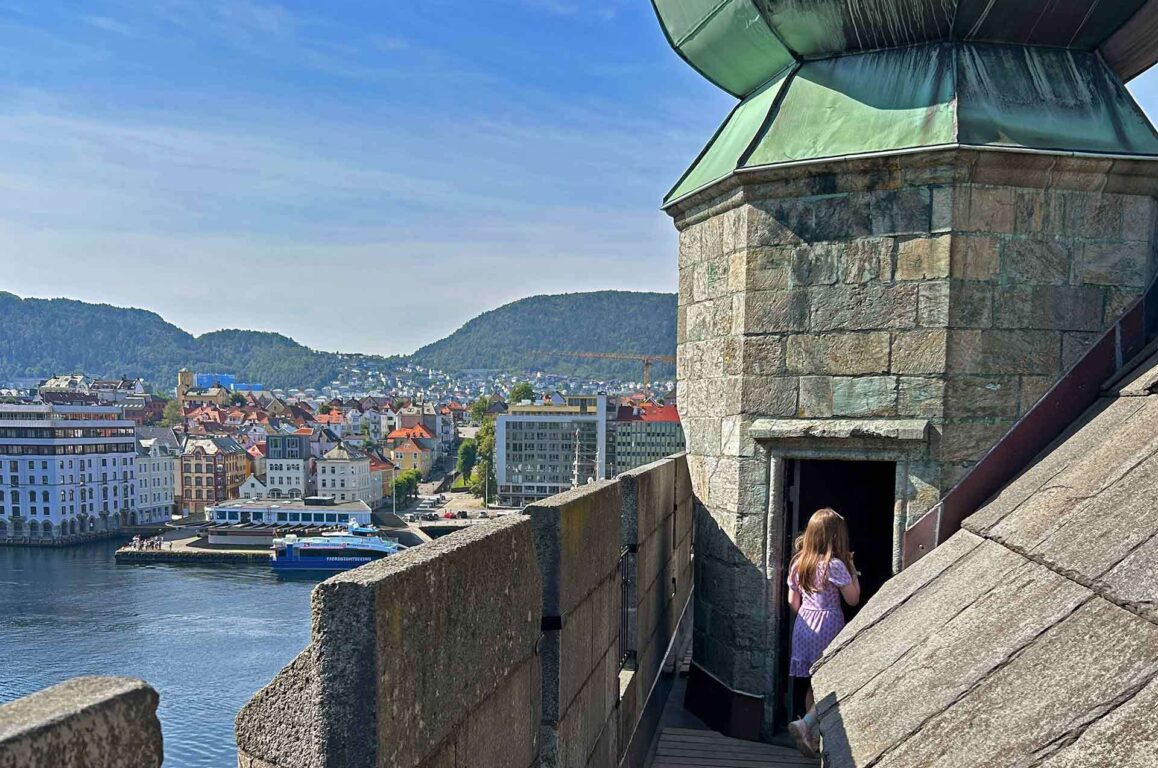
We also visit Håkonshallen (Haakon’s Hall), a stone hall built as a royal residence and banquet hall in the 13th century.
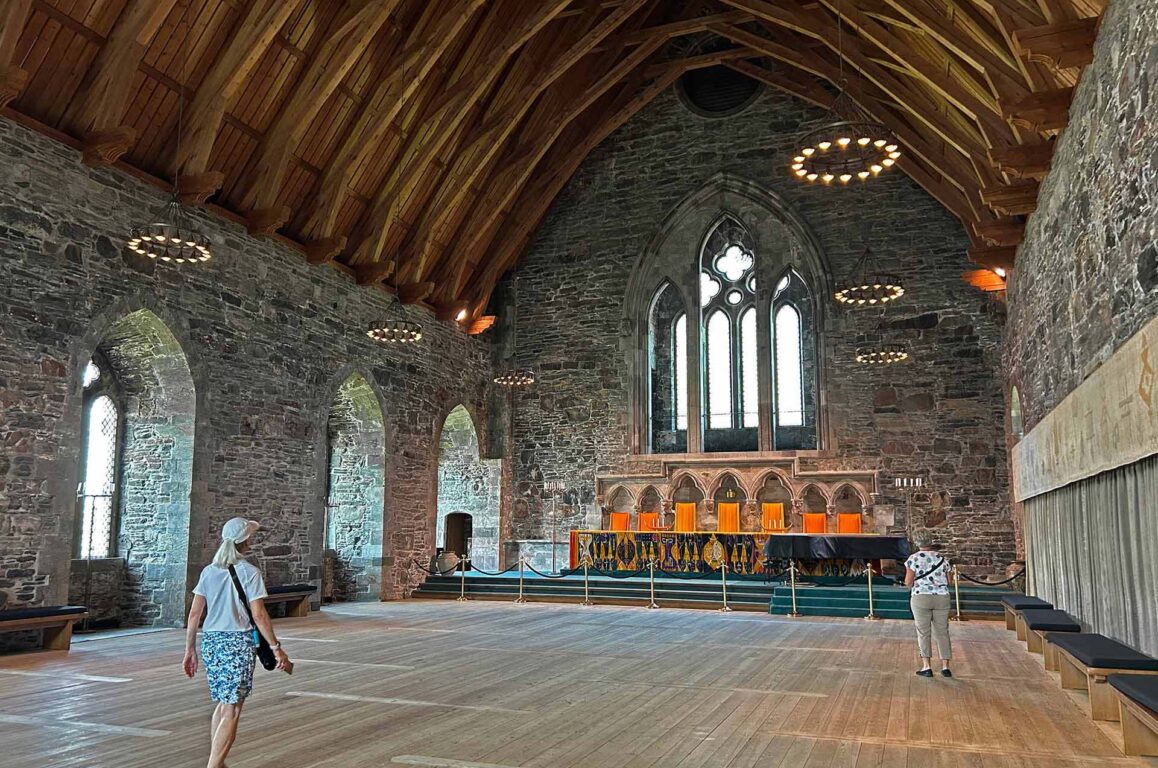
Nearby lies Mariakirken (St. Mary’s Church), a beautiful and well-preserved stone church from the 1100s.
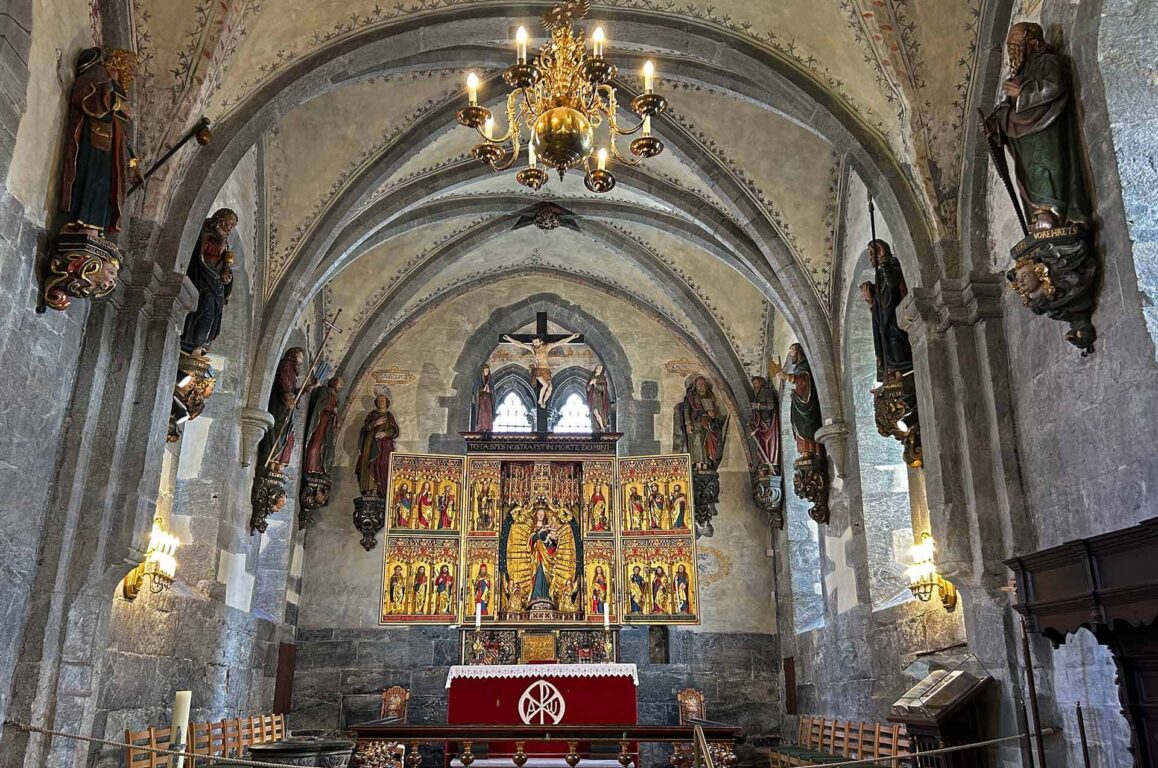
In the chancel stands a famous golden altarpiece from the 1400s, surrounded by statues of the apostles placed between the Gothic arches. To our surprise, there’s also a play corner in one of the vaults, so my daughter gets a well-deserved break from the "history lesson".
We also visit Korskirken (the Church of the Cross) and Domkirken (Bergen Cathedral), both from the Middle Ages and well worth seeing.
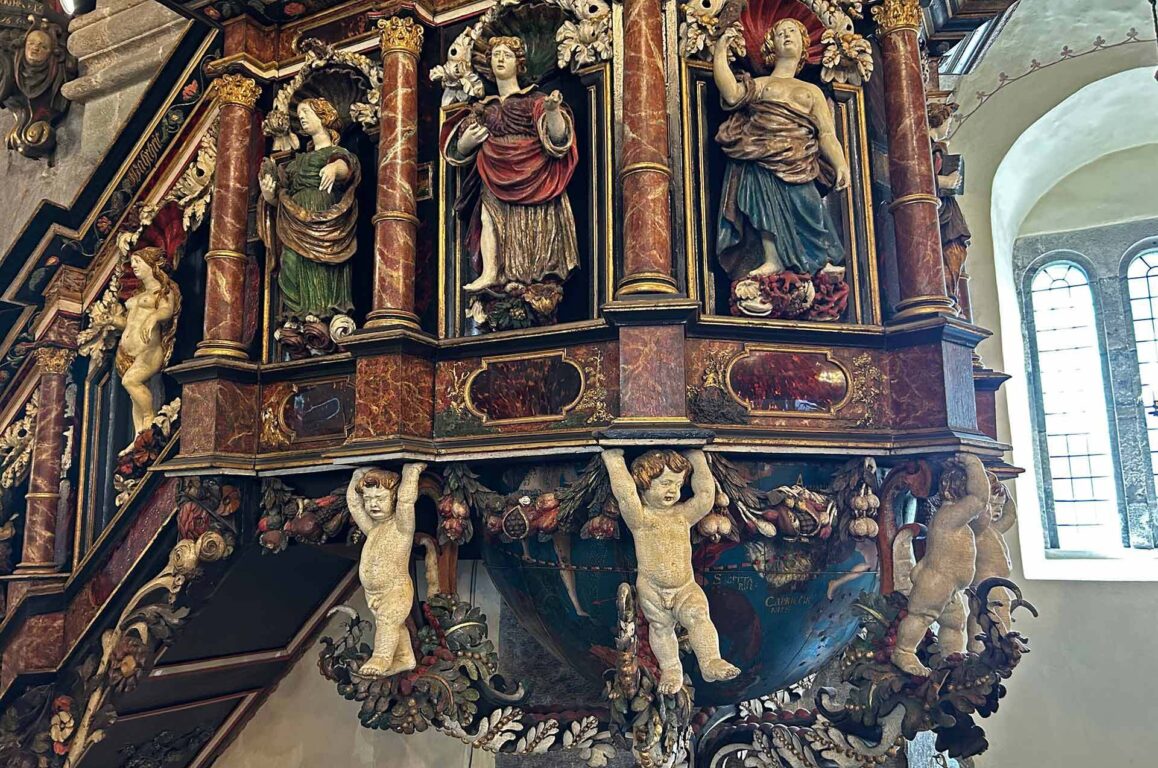
This time, our journey ends in Bergen. We’ve had quite an eventful journey, traveling by both ferry, express boat, bus, and car, and walking shorter distances on foot. There have been many highlights—we’ll remember the warm conversations with hosts and fellow travelers, and we’ve enjoyed delicious food all along the way, from freshly gathered eggs to locally sourced sushi.
My 8-year-old daughter might not be as fascinated by 1,000-year-old buildings as I am, but she was patient as long as we made time for ice cream breaks and playground stops along the way. We’re already talking about returning another summer to complete the route to Trondheim.
Want to travel along Kystpilegrimsleia?
You can read more about Kystpilegrimsleia here. You’ll find key sites, attractions, and accommodations on the digital pilgrim trail map, and information about public transport along the route at entur.no. You can also travel Kystpilegrimsleia with your own boat.